Monday, February 22, 2010
Sea of Cortez Threatened
 Life in the Sea of Cortez is endangered by destructive new fishing methods.
Life in the Sea of Cortez is endangered by destructive new fishing methods.Ten years ago graduate students Octavio Aburto-Oropeza and Gustavo Paredes surveyed the marine life of the Sea of Cortez (also known as the Gulf of California). In 2009 they went back and were shocked at how things had declined. Sixty percent of the surveyed sites showed signs of degradation, according to Aburto-Oropeza, and many are now missing the top predators normally present in healthy, functioning ecosystems.
"Ten years later we can actually measure the effects of not putting conservation measures in place," Paredes told Explorations Magazine. "Some of us had been conducting surveys in certain sites every year, but until this year we didn't know the whole story of what was going on."
The changes have occurred because of fishing. Traditional hook-and-line fisherman have been put out of business by vastly more damaging gill net fishing and "hookah" diving. Hookah fishermen use surface-supplied air through piping that allows them to walk along the seafloor for long periods of time. The technique is typically conducted at night when fish are resting, allowing the hookah fishermen to spear or grab large numbers of vulnerable fish and invertebrates.
In the most dramatic example of fishing impacts observed on the 2009 expedition a survey of San Esteban Island in the north revealed reefs devoid of fish and instead covered by mats of cyanobacteria.
There are areas which have flourished, though. One example is Cabo Pulmo near the southern tip of the Baja peninsula. Fishing restrictions there since 1995 have ensured that Cabo Pulmo retains a mix of sea life and flourishing fish populations. Other successes include Coronado Island inside the Loreto marine park and Los Islotes inside Espiritu Santo marine park.
Using compressed air has been banned in Mexico for sports fishermen for 40 years, but since commercial fishermen weren’t named specifically they had been allowed to use compressed air to clean the reef. In May 2009 this changed: the use of hookahs have now been outlawed for any type of fishing. Illegal fishing still goes on though, and environmental organisation Sea Watch is asking people to report any that they encounter at http://seawatch.org/en/Resource-Library/359/report-illegal-fishing
Further Reading:
Scripps Institution of Oceanography
Labels: dive destination, environment, research, SCUBA diving, SCUBA News, SCUBA Travel
Wednesday, November 04, 2009
SCUBA Travel release last quarter's bestselling books list
- Dive Atlas of the World: An Illustrated Reference to the Best Sites by Jack Jackson
300 pages detailing some of the world's best dive sites. (1) - Fifty Places to Dive Before You Die by Chris Santella
The fifth in Santella's bestselling "Fifty Places" series. (2) - Dive in Style
by Tim Simond
Luxury diving around the world.(3) - Coral Reef Guide Red Sea (Coral Reef) by Ewald Lieske, Robert Myers
Covering jellyfish, corals, nudibranchs, starfish, sea urchins, fishes and turtles of the Red Sea. (5) - Coral Reef Fishes: Indo-Pacific and Caribbean by Ewald Lieske, Robert Myers
A compact, guide to over 2000 species of fish you might see whilst diving on coral reefs. (6) - The Blue Planet DVD
The BBC television series on DVD - action shots of the intriguing behaviour of the underwater world with commentary by David Attenborough. (--) - The Underwater Photographer: Digital and Traditional Techniques
by Martin Edge
Hints, tips and advice on taking underwater photos. (--) - Thailand (Lonely Planet Diving & Snorkeling Guides) by Tim Rock
Dive sites of Thailand. Includes city guide to Bangkok. (10) - Top Dive Sites of the World by Jack Jackson
With contributions from authors like Lawson Wood, Guy Buckles, Nick Hanna and Paul Naylor, focuses on 75 world-class dive sites in waters as diverse as the icy Northern Atlantic and the tropical seas of the Pacific. (--) - Diving and Snorkeling the Sea of Cortezs by Susan Speck
91 Dive sites of Baja California described in detail. (--)
What do you think of this news item? Join a discussion.
Labels: books, SCUBA News, SCUBA Travel
Friday, October 09, 2009
Creature of the Month: Plumose Anemone
 Plumose anemones (Metridium senile) occur in large numbers in good diving areas in temperate waters. They comprise a tall, smooth column topped with a crown of feathery tentacles. When they contact they look like swirly blobs, as can be seen in our photograph.
Plumose anemones (Metridium senile) occur in large numbers in good diving areas in temperate waters. They comprise a tall, smooth column topped with a crown of feathery tentacles. When they contact they look like swirly blobs, as can be seen in our photograph.Individuals may be white, orange, green or blue in colour. They grow up to 30 cm tall and 15 cm across at the base. They like areas with currents so tend to live on prominent pieces of wrecks or on rocky pinnacles.
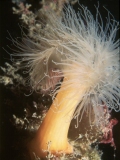 With fine, delicate tentacles they are unsuited to capturing large animals like fish. Instead they specialise in smaller prey such as small planktonic crustaceans. The anemone's columnar body is narrower just below the tentacles. A current will bend the stalk at this point and expose the tentacles broadside to the flow in the best position for feeding on suspended matter.
With fine, delicate tentacles they are unsuited to capturing large animals like fish. Instead they specialise in smaller prey such as small planktonic crustaceans. The anemone's columnar body is narrower just below the tentacles. A current will bend the stalk at this point and expose the tentacles broadside to the flow in the best position for feeding on suspended matter.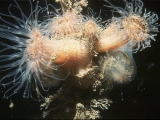 The Plumose anemone occurs from the Bay of Biscay (North of Spain) to Scandinavia in the northeast Atlantic, and on the west and east coasts of North America. It is unknown from the western basin of the Mediterranean but has been seen in the Adriatic, where it is believed to have been introduced. It has also been seen in Table Bay Harbour in South Africa where it was probably introduced from Europe.
The Plumose anemone occurs from the Bay of Biscay (North of Spain) to Scandinavia in the northeast Atlantic, and on the west and east coasts of North America. It is unknown from the western basin of the Mediterranean but has been seen in the Adriatic, where it is believed to have been introduced. It has also been seen in Table Bay Harbour in South Africa where it was probably introduced from Europe.

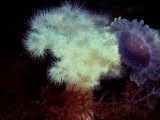
Further Reading:
Great British Marine Animals, by Paul Naylor
Ask Nature
What do you think of this news item? Join a discussion.
Labels: environment, Europe, marine biology, SCUBA diving, SCUBA News, SCUBA Travel, UK
Wednesday, July 15, 2009
Creature of the Month: Dragonet, Callionymus lyra

One hundred and eighty-six species of the "Little Dragon" fish live from Iceland in the North to the Indo-Pacific oceans in the South. You will find the species we are concentrating on today, Callionymus lyra, from Norway to Senegal: in the Eastern Atlantic and the North, Irish, Mediterranean, Black, Baltic, Aegean and other Seas.
The adult male C. lyra is colourfully patterned in orange and blue. The females are smaller and a mottled brown. They have an interesting courtship ritual. The male performs an elaborate display, darting around the female, spreading his brightly coloured fins and pulling faces! If the female is impressed the pair then swim side-by-side, almost vertically up to the surface. There they release the eggs and sperm into the water, spawning at dusk. Dragonet males are thought to mate only once in a lifetime.
Dragonets spend most of their lives on sandy or rocky bottoms. They live from the shallows down to 100 m. They are sometimes confused with gobies but have a much broader triangular, head and a long dorsal ray on their backs. If you see slender fish meeting this description darting away from you on the bottom it is probably a dragonet.
Further Reading:
Great British Marine Animals, by Paul Naylor
Labels: fish, marine biology, SCUBA diving, SCUBA News, SCUBA Travel, UK
Thursday, July 02, 2009
Belize barrier reef in Danger
The reef was added as a world heritage site in 1996 as the largest barrier reef in the northern hemisphere, with offshore atolls, several hundred sand cays, mangrove forests, coastal lagoons and estuaries.
The main problem with Belize Barrier Reef Reserve System concerns mangrove cutting and excessive development. The reef is also the country’s top tourist destination.
While requesting stricter control of development on the site, the World Heritage Committee also requested that the moratorium on mangrove cutting on the site which expired in 2008 be reinstated.
Further Reading:
List of World Heritage in Danger
What do you think of this news item? Join a discussion.
Labels: Belize, coral reef, SCUBA diving, SCUBA News, SCUBA Travel
Wednesday, June 03, 2009
Snorkeller killed by shark at St Johns, Egypt
The woman's leg showed visible bite marks, and medics said she probably bled to death before being lifted to the surface.
The shark was an oceanic white tip. Although inexperienced divers sometimes confuse it with the white tip reef shark, the oceanic shark is much bigger, stockier and often accompanied by pilot fish. Whereas the reef shark is no threat to divers, the oceanic white tip is one to be wary of and treated with respect. It is almost fearless and credited with many open-ocean attacks on people after air or sea disasters.
Saint John's is in the Southern Egyptian Red Sea. It is a popular destination for divers, a place where you often see large pelagic species. If you should encounter a oceanic white tip it is advisable to stay close to the reef and not to make any sudden movements.
What do you think of this news item? Join a discussion.
Labels: Red Sea, SCUBA diving, SCUBA News, SCUBA Travel, sharks
Thursday, March 26, 2009
Underwater photography competition: enter now
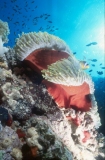 2009 is the 31st year of the International Festival of Underwater Photography, Films and Children's Artwork.
2009 is the 31st year of the International Festival of Underwater Photography, Films and Children's Artwork. The festival is open to both amateurs and professionals. You may enter by uploading photographs at http://www.paftachov.cz/en/www/. The deadline for accepting the works April 22nd 2009. The photographic categories include: wide-angle image without a diver; wide-angle image with a diver; macro image and water animal image.
The festival started in 1979. In the beginning it was a modest 16mm and 8 mm films competition, later upgraded with photographs.
As the time went by, categories expanded with slides, videos, and children's art works being added.
At first all competition works were assessed only by the audience. Then in 1994, professional juries were introduced.
In addition to local authors, participants in the come from many countries including Australia, Belgium, Egypt, Finland, France, Italy, Canada, Yugoslavia, Tunisia, Turkey, Ukraine, USA and Great Britain.
The festival is now an international event organised under the auspices of CMAS, the World Underwater Federation which is one of the oldest dive organisations in the world.
The originally one-day event has become a four-day event with a lot of space for discussions, friendships, offering divers plenty of experiences and issues to be assessed. Anyone can join this festival, which is aiming to present results of diver's works in many forms, the artistic in particular.
The festival takes place in Tachov, Czech Republic, from 21st to 24th May 2009.
Further reading:
http://www.paftachov.cz/en/www/
--
What do you think of this news item? Join a discussion.
Labels: photography, SCUBA diving, SCUBA News, SCUBA Travel
Tuesday, March 17, 2009
97% of Divers disturb seabed: Males worst offenders
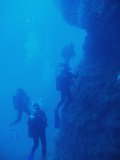 Most SCUBA divers disturb the seabed, Spanish researchers say. A study published in the ICES Journal of Marine Science found that nearly 97% of divers in marine protected areas (MPAs) made contact with the bottom. Inexperienced, male divers carrying a camera or torch were the worst offenders.
Most SCUBA divers disturb the seabed, Spanish researchers say. A study published in the ICES Journal of Marine Science found that nearly 97% of divers in marine protected areas (MPAs) made contact with the bottom. Inexperienced, male divers carrying a camera or torch were the worst offenders.Creating a marine protected area tends to increase diving in that vicinity. Scientists from the University of Alicante studied the behaviour of divers in marine protected areas, the effects of diving on the natural environment and the characteristics that influence diver behaviour. They found that impacts caused by recreational scuba activity vary widely among different divers.
The scientists followed a total of 181 recreational divers in Mediterranean MPAs, recording the contacts they made with the seabed and the effects produced. They also made notes on the features of the dive. Their observations revealed that 175 of the divers observed (96.7%) made at least one contact with the seabed. Flapping was the most frequent type of contact, and the main damage by this action was to raise sediment.
Contact with the seabed was greater for males than for females, inexperienced divers than for experienced divers, camera or dive light users than for non-users, and divers unaccompanied by a dive leader or who had not been briefed about avoiding seabed contact before undertaking a dive than for accompanied or briefed divers.
The research team hopes that a greater understanding of the causes of harmful behaviour may be useful for stricter management, reducing diving damage and assuring the sustainability of diving in marine protected areas.
Journal Reference:
Luna, B., Valle Pérez, C., and Sánchez-Lizaso, J. L. 2009. Benthic impacts of recreational divers in a Mediterranean Marine Protected Area. – ICES Journal of Marine Science, 66: 000–000.
--
What do you think of this news item? Join a discussion.
Labels: Mediterranean, research, SCUBA diving, SCUBA News, SCUBA Travel
Wednesday, March 11, 2009
Survey Reveals Top 10 Dive Sites in Europe
- The Zenobia, Cyprus
The pristine wreck of a huge ferry. Lying on its port side, the wreck starts at about 15 m and descends to 42 m. Fabulous dive. Possibly the best shipwreck dive in the world in recreational depths. 20 m plus visibility and some great swim-throughs. Needs several dives to see anything like all of it.
- Blue Hole, Gozo
A beautiful sharp drop off into the blue hole with what seems like limitless visibility and literally feels like you are on the very edge of the world. A most extraordinary dive.
- Cirkewwa, Malta
Features the wreck of the Rozi MV as well as stunning underwater topography. Visibility is very good and there iss ea life in abundance: barracuda, morays, octopus, cuttlefish and even dolphins.
- Booroo, Isle of Man
The Burroo, with its extremely diverse and plentiful marine life offers a truly magnificent dive. In fact, in areas exposed to the fast flowing current, it is something of a challenge to find a single square centimetre of bare bedrock, so abundant is the life here.
- Blockship Tabarka, Scapa Flow, Scotland
This shallow 18 m dive is a real beauty. One of the block ships scuttled to prevent submarine attack during WW2. Covered in life, a beautiful place. Worth the trip and the one of surprises of Scapa.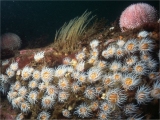
- Diamond Rocks, Kilkee, Ireland
Claimed to by on a par with the famous Yongala. It is a cold water dive off Ireland's west coast. The bay is fairly sheltered and is teaming with life. The terrain is full of rocks and gullies and the water is really clear.
- Eddystone Reef, England
12 miles off Plymouth, England. The reef is from 8 to 60 m. Encrusted with jewel anemones and with the remains of ancient wrecks, including a large 17th century anchor. Stunning.
- Secca della Columbara, Italy
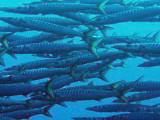 One of the best dives in the Mediterranean. It features a steep, beautifully-decorated, wall; large shoal of barracuda; grouper; giant amberjacks and a wreck. The wreck is a 74 m ship which was carrying slabs of marble. It sank in 2005 and rests at 20 m in two parts.
One of the best dives in the Mediterranean. It features a steep, beautifully-decorated, wall; large shoal of barracuda; grouper; giant amberjacks and a wreck. The wreck is a 74 m ship which was carrying slabs of marble. It sank in 2005 and rests at 20 m in two parts.
- Fanore, Ireland
Shore dive in crystal clear Atlantic water with abundant fish.
- Chios island, Greece
Small undersea caves and paths between impressive rocks, colourful reefs and vertical walls.
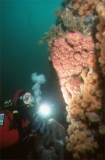
What do you think of this news item? Join a discussion.
Labels: Europe, Greece, Ireland, Italy, Malta and Gozo, Mediterranean, SCUBA diving, SCUBA Travel, UK
Wednesday, May 07, 2008
Dominica’s Dive Fest celebrates 15 years
 Dominica’s Dive Fest, the Caribbean’s longest running scuba diving festival, encourages visitors to discover the beautiful landscapes and colourful marine life within the island’s waters. Would-be divers and snorkellers as young as eight can participate in pool- or ocean-based introductory sessions to teach them the basics, with some trial sessions even offered completely free of charge.
Dominica’s Dive Fest, the Caribbean’s longest running scuba diving festival, encourages visitors to discover the beautiful landscapes and colourful marine life within the island’s waters. Would-be divers and snorkellers as young as eight can participate in pool- or ocean-based introductory sessions to teach them the basics, with some trial sessions even offered completely free of charge. The annual event takes place in Dominica from 11th – 20th July 2008. To mark this special 15th anniversary year, many local dive centres are offering group travel packages whereby one diver goes free with every seven that book.
“Dive Fest was established to showcase the incredible marine environment of Dominica to both visitors and residents and is now one of the island’s staple events” comments Steve Bornn, director of tourism at the Discover Dominica Authority.
More information on the Dive Fest can be found at can be found at www.dominicawatersports.com. For more on diving Dominica see SCUBA Travel: Dominica
Labels: Caribbean, dive destination, Dominica, SCUBA diving, SCUBA Travel
Tuesday, October 16, 2007
Scientists develop artificial coral reef in Red Sea
Take a dive off the coast of Eilat these days and you're liable to find yourself swimming around a huge yellow concrete and wire construction that stretches four yards up from the seabed, is four yards wide, and is full of holes.
The reef is a unique new approach to conservation in the Red Sea and part of a joint co-operative project between Israel and Jordan.
Dr. Nadav Shashar, the supervisor of the research project, and a marine biologist at the National Center for Mariculture, says "Because of the increase in the number of visitors, the coral reefs are unable to overcome the damage caused and are beginning to die out.
Part of the problem is novice divers. "They kick up the sand, or damage the corals by accident. Multiple that by 100,000 people and that's considerable damage," says Shashar. "These people don't mean to harm the reefs, but they just don't know how to dive properly."
The developers hope that the artificial reef will create a new attraction for these divers, steering them away from the natural reefs, reducing the pressure there and enabling them to recover from some of the damage inflicted on them over the last few years.
At the same time, the Tamar reef which is located near Coral Beach also provides the researchers with a unique underwater laboratory, enabling them to observe and unravel the development and growth of this unique and complex ecosystem.
Further reading: Israel Ministry of Foreign Affairs
What do you think of this news item? Join a discussion.
Labels: coral reef, dive destination, Red Sea, SCUBA diving, SCUBA Travel
Sunday, June 24, 2007
Caribbean Corals in Danger of Extinction
The study found that 10 percent of the Caribbean’s 62 reef-building corals were under threat, including staghorn and elkhorn corals. These used to be the most prominent species but are now candidates to be listed as Critically Endangered on the IUCN Red List of Threatened Species.
A gathering of 23 scientists in Dominica analysed data on Western Tropical Atlantic corals, seagrasses, mangroves and algae, which are fundamental components of marine ecosystems providing food and shelter for numerous other organisms and local communities.
The threats to corals and other marine species include coastal pollution and human development; increased sedimentation in run-off water; thermal stress and heightened severity of hurricanes from climate change; and shifts in species dynamics due to over-fishing, according to the study. Scientists explained that the Caribbean has undergone the longest and most sustained impacts from human development since the colonization of the Americas.
Next to corals, mangroves appear to be the hardest hit. Mangrove cover in the region has declined by 42% over the past 25 years, with two of the eight mangrove species now considered Vulnerable to extinction and two more in Near Threatened status.
“Mangroves protect shorelines, shelter fish, and filter pollution,” said Aaron Ellison of Harvard University. “The Caribbean was blessed with an abundance of these useful plants, but the consensus of this workshop is that mangroves are in trouble everywhere and need to be protected and restored,” he added. Mangrove forests are being cut down to make way for coastal housing, tourism, and aquaculture development.
The scientists noted that some healthy Caribbean coral reefs still exist in well-managed marine protected areas such as Bonaire Marine Park in the Netherlands Antilles. Direct human impacts are reduced in these areas allowing most corals to thrive; however, thermal stress from global warming affects all corals in the Caribbean and must be reversed if these refuges of Caribbean beauty are to survive, they added.
Further Reading: Conservation International
What do you think of this news item? Start a discussion.
Bookmark with: del.icio.us | Digg | Newsvine | NowPublic | Reddit
--
Subscribe to SCUBA News (ISSN 1476-8011) for more free news, articles, diving reports and marine life descriptions - http://www.scubatravel.co.uk/news.html

Labels: Caribbean, coral, environment, SCUBA Travel
Friday, May 11, 2007
Egypt Stops Reef Fish Exports
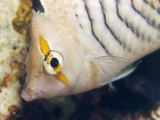
Egypt have cancelled a decree which allowed companies to collect reef fish and export them to Europe and other markets .
According to the Hurghada Environmental Protection and Conservation Association (HEPCA), the previous decision had a devastating effect on nature and on the coral reef condition in the whole area. HEPCA launched a huge campaign against this decision and lobbied with other agencies, enthusiastic individuals, and major media representatives.
As a result of the decision HEPCA have ceased legal actions against the Minister's old decree.
Further Reading: http://www.hepca.com/
What do you think of this news item? Start a discussion.
--
Subscribe to SCUBA News (ISSN 1476-8011) for more free news, articles, diving reports and marine life descriptions - http://www.scubatravel.co.uk/news.html

Labels: environment, fish, Red Sea, SCUBA Travel, sealife
Wednesday, October 18, 2006
Madagascar Coral Reef Massively Damaged
A number of coral bleaching events – where rising sea temperatures cause corals to turn white and ultimately die – have struck Madagascar's southwest coast over the years, the worst being in 1998 and 2000.

Previous surveys have found that Madagascar's northern coasts escaped damage from these global bleaching events, thanks to cool water currents from nearby deep ocean areas.
Madagascar's southwestern coasts, however, have not been so lucky.
In areas where scientists found damaged coral reefs, algae had started to take over the dead reefs, and fish diversity was lower than in areas with healthy corals.
Madagascars coastal waters are believed to have some of the highest diversity of marine species in the Indian Ocean.
During the survey, led by the conservation groups Blue Ventures and the Wildlife Conservation Society and funded by Conservation International, scientists recorded 386 species of fish along the southwestern reefs of the Andavadoaka region. Of these, 20 species had never before been recorded for Madagascar and one may be a new discovery to science. The survey team believes that further research may reveal as many as 529 fish species living among these reefs.
The survey team also recorded 164 species of hard coral, including 19 that were previously unknown to inhabit Madagascar’s waters. Another four coral species could not be identified and may be new to science.
The total number of coral species recorded was significantly lower than those previously found along Madagascar’s northwestern coasts. These lower numbers are believed to be a direct result of the mass bleaching events of 1998 and 2000.
“Global warming is a major threat to the world’s coral reefs, but there are other more direct threats as well that can be more immediately addressed,” said Alasdair Harris, research director of Blue Ventures. “Destructive fishing practices and nutrient runoff from villages and resorts are also killing these incredible underwater systems that provide vital resources for the people of Madagascar.”
Overfishing and nutrient runoff have decreased the number of plant-eating species living within the coral reefs, allowing damaging algae to grow on corals already stressed by rising sea temperatures. By increasing the number of herbivores, damaging algae can be controlled and coral settlement and growth can increase.
Harris said it is urgent that government agencies, NGOs and local villages work together to create marine protected areas to prevent overfishing and other activities that are damaging coral reefs and the many marine resources they provide. The development of alternative and sustainable incomes – such as ecotourism – will also assist local villages that are currently dependent on these dwindling marine resources.
But the survey team also found some signs of hope. Scientists discovered several small reefs with corals that appeared to be resilient to rising sea temperatures and could ultimately be used to reseed damaged reefs. These resilient reefs may also provide valuable information about how to protect corals from future damage.
The entire report can be found at http://www.blueventures.org/
--
Subscribe to SCUBA News (ISSN 1476-8011) for more free news, articles, diving reports and marine life descriptions - http://www.scubatravel.co.uk/news.html

Labels: coral, environment, Madagascar, SCUBA Travel
Thursday, August 03, 2006
Sipadan Development Scaled Back
The contractor which undertook the Sipadan project came under severe criticism when a barge ran aground on 14 May, serverly damaging coral reefs.
Musa halted work on the project but later said that the Cabinet had decided to allow it to continue, but scaled down and using environmentally friendly materials.
Outraged by the damage on corals, Prime Minister Datuk Seri Abdullah Ahmad Badawi rebuked Musa on July 27 for defying his advice not to build a clubhouse on the island. "I was very angry with Musa. I told him not to build it. I said so many corals are dying and he promised that he would look into the project."
Musa now says the new development concept would involve only the building of toilets and a small rest area for divers. "We will come up with a new development concept that is environmental-friendly and suits the eco-system. We will announce it two or three months from now" he says.
Sources: Malaysian National News Agency, The Star
More on Diving Sipadan:
- Sipadan Dive Sites
- Diving Trip to Sipadan
- Sipadan Dive Operators
- Sipadan Prints
--
Subscribe to SCUBA News (ISSN 1476-8011) for more free news, articles, diving reports and marine life descriptions - http://www.scubatravel.co.uk/news.html

Labels: environment, SCUBA Travel
Tuesday, June 13, 2006
1.5 Million for Sipadan Kidnap Victims
The order was made against Paris-based tour agent Ultramarina, which handled the tour for the three, for failing in its duty to monitor the risks in the region.
It said the company should also have realised that Western tourists would act as a magnet for a kidnap case.
The British Foreign & Commonwealth Office are currently advising: "Terrorists and criminal elements are continuing with plans to kidnap foreign tourists from the islands and coastal areas of Eastern Sabah. Boats travelling to and from offshore islands and dive sites are possible targets. If you wish to visit resorts on, and islands off, Eastern Sabah, you should exercise extreme caution." The Australian government offers similar warnings.
The Sabah Tourism Board, however, offer reassurances "Sabah is a safe destination to travel to and we wish to assure that the Malaysian Government takes security and health issues very seriously and will continue to ensure that all Malaysians and visitors alike are safe and well while on holiday in the country.".
This has been a bad couple of months for the Sabah Tourism Board as in May a barge seriously damaged an area of coral of this famous diving spot.
--
Subscribe to SCUBA News (ISSN 1476-8011) for more free news, articles, diving reports and marine life descriptions - http://www.scubatravel.co.uk/news.html

Labels: SCUBA Travel
Wednesday, May 17, 2006
Barge Damages Sipadan
All diving operators and resorts had to leave the island of Sipadan on environmental grounds a couple of years ago: so what was the barge doing there?
According to Andrea and Antonella Ferrari, authors of A divers' guide to Underwater Malaysia Macrolife,
"The damage is incalculable — one of Sipadan’s most precious and beloved spots, well-known the world over, is no more, transformed by a single inexplicable act of human carelessness into a grisly mass of broken and pulverised corals, shredded turtles and mounds of grey gravel suffocating what little is left of the legendary drop-off."
The barge was anchored next to the drop-off. Sipadan is a limestone pinnacle rising from 600 m. It is not far from the East coast of Sabah, Malaysia.
Source: Fins Magazine
--
Subscribe to SCUBA News (ISSN 1476-8011) for more free news, articles, diving reports and marine life descriptions - http://www.scubatravel.co.uk/news.html

Labels: SCUBA Travel
Tuesday, April 04, 2006
Tiny Nation Creates World's Third-Largest Marine Reserve
The Phoenix Islands Protected Area bans commercial fishing to protect more than 120 species of coral and 520 species of fish inside its 184,700 sq km (73,800 sq miles). It is the world's first marine park with deep-sea habitat, including underwater mountains.
Kiribati is located in the central Pacific between Hawaii and Fiji. It comprises 33 islands stretching across several hundred miles.
Source: ENN
--
Subscribe to SCUBA News (ISSN 1476-8011) for more free news, articles, diving reports and marine life descriptions - http://www.scubatravel.co.uk/news.html

Labels: SCUBA Travel
Wednesday, March 15, 2006
Top 100 Dives of the World
Disagree with this list? Cast your vote at http://www.scubatravel.co.uk/topdiveslong.html
- Yongala, Australia
- Thistlegorm, Egyptian Red Sea
- Blue Corner Wall, Palau, Micronesia
- Barracuda Point, Sipadan Island
- Shark and Yolanda Reef, Egyptian Red Sea
- Navy Pier, Australia
- Manta Ray Night Dive, Kailua Kona, Hawaii
- Big Brother, Egyptian Red Sea
- Liberty, Bali, Indonesia
- Elphinstone Reef, Egyptian Red Sea
- Great Blue Hole, Belize
- Sodwana bay, South Africa
- Sha'ab Rumi South, Sudan
- President Coolidge, Vanuatu
- Ras Mohammed, Egyptian Red Sea
- Grand Central Station, Gizo, Solomon Islands
- Darwin Island, Galapagos
- Similans, Thailand
- Osprey Reef, Coral Sea, Australia
- Straits of Tiran, Egyptian Red Sea
- Richelieu Rock, Thailand
- Bloody bay wall, Little cayman
- Great white wall, Tavieuni Fiji
- Stingray City, Grand Cayman
- The Zenobia, Cyprus
- Darwin Arch, Galapagos
- Jackson Reef, Egypt
- Pedras Secas, Noronha, Brazil
- Holmes Reef, Coral Sea, Australia
- Puerto Galera, Philippines
- Poor Knights, New Zealand
- Shark Alley, Grand Cayman
- Half Moon Wall, Belize
- Protea Banks, South Africa
- Wolf Island, Galapogos
- Peleliu Express, Palau
- Dos Ojos (Los Cenotes), Playa del Carmen, Mexico
- The Canyons, Utila, Honduras
- Canibal Rock, Komodo, Indonesia
- Mnemba Island, Tanzania
- Cozumel, Mexico
- Blue Hole, Dahab, Egyptian Red Sea
- Gili air, Indonesia
- The Point, Layang - Layang
- Dirty rock, Cocos Island, Costa Rica
- Cod Hole, Northern Great Barrier Reef
- Rainbow Warrier, New Zealand
- The Express, Kuredu, Maldives
- Daedelus, Egyptian Red Sea
- Garuae Pass, Fakarava Island, French Polynesia
- Hilma Hooker, Bonaire
- Hanging Garden, Sipadan
- Booroo, Isle of Man
- Sound Drift, Isle of Man
- Chickens Rock, Isle of Man
- Toucari Caves, Dominica
- Barra Reef, Mozambique
- Wreck of the Bahama Mama, New Providence, Bahamas
- Blue Hole, Malta
- Joel's, PNG
- Tiputa Pass, Rangiroa, Polynesia
- Seal rocks, NSW, Australia
- Diamond Rocks, Kilkee, Ireland
- Fujikawa Maru, Truk Lagoon (Chuuk Lagoon)
- Sugar Wreck, Grand Bahama Island
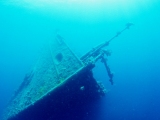
- Umbria, Sudan
- Fish Rock, Off South West Rocks in NSW, Australia
- Office, Mozambique
- South Point, Sipadan
- Chios island, Greece
- Pixie pinnacle and pixie wall, GBR, Australia
- Palancanar Bricks, Cozumel, Mexico
- Bay of Pigs, Cuba
- Tiputa pass, Rangiroa, New Zealand
- St Johns, Egypt
- Turtle tavern, Sipadan
- Hin Muang, Thailand
- Great Basses reef, Sri Lanka
- Port Royal, Roatan, Honduras
- Eye of the Needle, Saba
- Tubbataha, Palawan, Philippines
- Steel Forest, Nassau Bahamas
- alcyone, Cocos Island, Costa Rica
- Tormentous, Cozumel, Mexico
- Eel garden, Dahab, Egyptian Red Sea
- Boulari pass, New-Caledonia
- Am chesonet, St Lucia WI
- Aliwal Shoal, South Africa
- RMS Wreck of the Rhone, British Virgin Islands
- Santa Rosa Wall, Cozumel, Mexico
- New Dropoff, Palau
- Kunkungan, Lambeh Strait, N. Sulawesi, Indonesia
- Cenotes, Playa Del Carmen, Mexico
- Fernando de Noronha, Brasil
- Port Jackson, Sydney, Australia
- Punta Sur, Cozumel, Mexico
- Lake Malawi, East Africa
- Japanese Gardens, Koh Tao, Thailand
- James Barrie, Scapa Flow
- Los testigos islands, Venezuela
--
Subscribe to SCUBA News (ISSN 1476-8011) for more free news, articles, diving reports and marine life descriptions - http://www.scubatravel.co.uk/news.html

Labels: SCUBA Travel
Friday, October 28, 2005
Diving Trip to Sipadan
Manchester - Singapore - Sipadan
With a business trip to Singapore looming and no holidayorganised for the Red Sea this winter, I looked for an
extension to the Singapore trip to get in some good diving.
I first tried some UK dive tour operators to see if a
stop-over in Singapore could be organised but the flights
were not available. Then it was onto the web for a local
operator to book a tour out of Singapore. I found several
but selected Waikiki Divers because they seemed to have
flexible tour lengths and times. A quick email followed
by a phone call put me in touch with Stella Lee from
Waikiki who was able to create a six day, five night trip
to Sipadan on the day required, and returning in time for
the flight back to Manchester.
From Singapore it was a 9:30 am taxi to the Senai airport
across the border in Malaysia, a flight to Kotu Kinabalu,
followed by another to Tawau, and then a one hour minibus
ride to get within one last leg of the destination. A one
night stay at the very spacious and quite luxurious
Seaquest Hotel in Semporna was the break in the journey.
The following morning at 8:30 am we were met by the
mini-bus which transferred us the short distance to the
jetty where Palau Sipadan resort tours have their shore
base. A 1 hour speedboat ride was the final staqe to get
to Kapali where the accomodation is in wooden chalets
connected by wooden walkways built over a submerged reef,
with a small very white beach uncovered at low tide. No
one has been able to stay on Sipadan itself since 1/1/2005,
apart from some soldiers whose job is to prevent divers who
land there for their surface interval, from wandering off
down the beach or into the inerior of the island.
Our group comprised one from England, an American, a
Canadian, a Turkish couple and a Japanese, so plenty of
opportunity for swapping notes on world diving.
The Sipadan Diving
The check out dive followed later in the morning and
was a dive from the jetty at the dive centre. Basically
a sandy bottom with coral blocks and quite a variety of
small fish. In the afternoon a short boat ride to
sweet-lips table led to a similar dive but with somewhat
bigger fish (sting rays, large jacks) giant mantis
shrimps and a very large turtle. Most evenings the dive
centre organised a dusk dive for those with the energy
left. Some considerable time was spent trying to get
photgraphs of a shy mandarin fish.
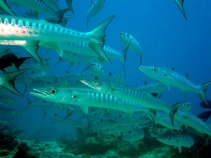 The next day we took the boat to Sipadan (about half an hour away with 300-400 horsepower behind us). In the morning we dived at the coral garden area, and after a break went to the South Point. Here the life was what you might expect from one of the top dive sites in the world. I counted 11 white tip reef sharks resting on the bottom, was passed by a six foot tiger shark going the other way, one Napolean wrasse, too many turtles to count
The next day we took the boat to Sipadan (about half an hour away with 300-400 horsepower behind us). In the morning we dived at the coral garden area, and after a break went to the South Point. Here the life was what you might expect from one of the top dive sites in the world. I counted 11 white tip reef sharks resting on the bottom, was passed by a six foot tiger shark going the other way, one Napolean wrasse, too many turtles to countand an octopus in the shallows at the end of the dive.
For variety we also went to Mabul Island where we dived
in the junk underneath the SeaVentures rig. Here were
plenty of exotic small creatures (nudibranchs, frog fish
etc) but too much man-made rubbish for my liking.
Further dives at Sipadan saw similar numbers of macro
creatures, including a large shoal of barracuda forming
the traditional swirling cylinder, and again an unlimited
selection of turtles.
We were extremely well looked after by the staff at
Kapalai, the food was good, the weather warm but really
quite windy (which keeps the huts cool at least).
Trip of a Lifetime
The trip was well organised, everything went just like
clockwork but was very relaxed at the same time. So if
you get as far as Singapore I stringly recommend you
contact Stella at Waikiki Divers and let them organise
the trip of a lifetime for you.
For other dive operators going to Sipadan see the SCUBA Travel Malaysia Diver Operators page. For the diving around Sipadan see the dive sites page.
--Subscribe to SCUBA News (ISSN 1476-8011) for more free news, articles, diving reports and marine life descriptions - http://www.scubatravel.co.uk/news.html

Labels: SCUBA Travel
